Fancy a little downtime with a relaxing soak in a natural hot spring on your Asia vacation? Onsens in Japan are the answer to your prayers, having been an integral part of traditional Japanese culture for centuries. Before you dive in, here’s the lowdown.
There’s a lot to tick off on any wish list or bucket list for Japan – the food: sake, the sushi, dark layers of flavorful ramen, yakitoris, and clean cut fresh sashimi; the scenery: volcanic peaks, rolling valleys, snow white landscapes, cherry blossom-lined streets, island hopping; the sprawl of shopping centers and districts, neon lit nightlife, the smooth sailing of the bullet trains and ancient temples, monasteries and cultural centers. The list may be endless, but onsens in Japan – traditional hot springs where the Japanese relax and bathe – are one of the cornerstones of culture and tradition. Here’s all you need to know about Japanese onsens.
What is an onsen?
There are thousands of onsens in Japan across 3000 onsen towns, with the majority situated in Hokkaido.
Onsens in Japan are a communal bathing and spa facility or, more frequently, traditional inns called a ryokan which are centered around naturally occurring hot springs, either indoor or outdoor. There are thousands of onsens in Japan across 3000 onsen towns! The majority of these however, are situated in the northernmost island of Hokkaido where the weather is predictably colder year round than anywhere else in the country. While ryokans traditionally offer communal bathing areas, some luxury ryokans also come with private facilities.
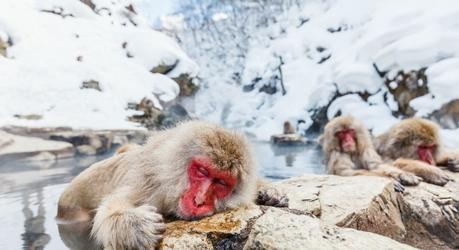
Onsens are known for a wealth of minerals – from sodium to calcium and chloride. Depending on the type of onsen you choose, a good soak is generally believed to cure a host of issues such as fatigue, muscle pains, digestive problems and bruises. No wonder then that the Japanese see these minerals as intrinsic to their vitality. They believe the skin absorbs the beneficial properties of the naturally heated spring water, which aids your general well-being.
The comfort zone
As a nation, the Japanese are incredibly respectful of tradition. Much like their tea ceremony or the precision with which they cultivate and comb their zen rock gardens, there is a protocol when it comes to onsens in Japan. However, if you’re feeling a tinge of anxiety about onsen etiquette, don’t. With some handy tips on how to maneuver onsen etiquette, all you need to think about are those soothing waters and the calm peaceful atmosphere, the quiet, and the time to yourself.
To begin with
The vast majority of onsens are segregated by sex; the blue symbol is for the men’s changing room and the red symbol is for women’s. Nice and easy. Inside each room you will find individual areas with baskets and lockers. Undress, lock away your personal towel and only bring through bath products such as shower gel or shampoo with you, as well as the small hand towel left for you.
In the washing area, find your free space, take a seat and use your bath products like you would at home. Afterwards, rinse it all down, leave your bath products here to collect later on the way back and it’s finally time to enter the actual baths with just your small hand towel.
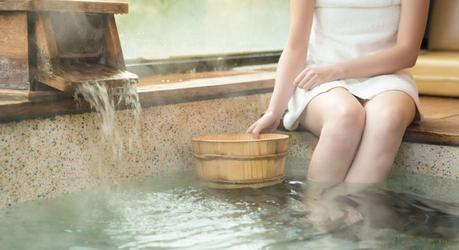
Mind the heat
If there is more than one hot water pool, look for signs indicating the temperature of each. While Japanese people may be very used to nearly boiling hot water, a first time visitor may not, so don’t just slid right in. Look for the appropriate signs and failing that, test each pool out with your foot. Find what’s comfortable for you.
After the onsen
When you’ve had a good soak, it’s time to leave. On the way out shower yourself down in the washing room and collect any bath products you’d left behind. Pat yourself down and head on into the changing room where you can use own towel and get changed. It’s that simple and easy, and you will feel completely invigorated afterwards.
Etiquette of onsens in Japan
Some general rules to keep in mind:
- Most onsens do not allow people with tattoos to enter. Japan has had a very mixed relationship with the tattooed national mafia, the Yakuza. This rule was a very simple and effective way to keep unwanted elements away from the peaceful onsen business. So it’s always best to inquire online before visiting.
- Don’t splash. The water is roasting and no swimming or washing is allowed. Remember, this isn’t a public swimming pool.
- Rinse out your hand towel at the end and put it in the basket or dispenser advertised.
- Make sure to take all your personal belongings with you, as anything left behind will be binned.
- When you are in the actual baths soaking, try to keep the hand towel out of water. A lot of Japanese people either fold it and put it atop their heads or fold it and use it as neck support to lean against the edge of the pool. Also, try to keep your head out of the water. It’s impolite and the minerals in the water will affect your eyes.
Onsen Facts: Did You Know?
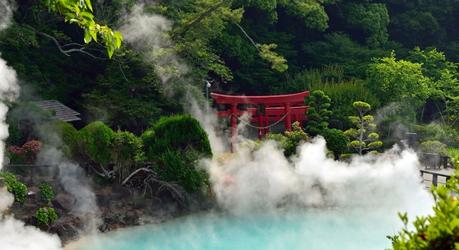
Onsengai: Any town or area made famous for its onsen is called an onsengai. There are onsen towns that literally function around that particular onsen by doing a number of things such as organizing sightseeing activities and providing local souvenir shops.
Private Onsen: Some onsens and onsen ryokans offer private onsen services. As long as you book ahead, you can avail of an onsen all to yourself.
Onsen Foods: Though bringing in food is forbidden when bathing, there are in fact foods made with onsen water and vapor. Onsen tamago for instance, is a half-boiled egg. Using a traditional method, people soak chicken eggs in the hot water and wait for the 20 minutes or so for it to cook! Then there’s onsen manju, which is a bun with a sweet bean paste inside – steamed with onsen vapour, it is softer and moister than your regular manju.
Dogo Onsen: Hidden away in a towering wooden castle located on the island of Shikoku, is one of the oldest onsens in Japan. Dogo onsen has been in use for over 3000 years and its guests have included a mix of commoners, emperors and, as some would say, maybe even Gods!
Beppu: Beppa is a city in Kyushu, a few hours east of Fukuoka, with the world’s largest amount of hot spring water discharge in Japan. Beppu may be a small town, but with around 2,300 onsen sources, is has become one of the top places in Japan to experience onsens.
Time Travel: For the Japanese, bathing is much more than a simple wash or pastime. They believe that the hot springs can clean not just the body but also the soul. Shinto, Japan’s indigenous belief, focuses on water purification and how it can unblock trapped energy. The hot spring water offers not just relaxation but restoration. Furthermore, it is believed to delay the aging process. So think about that the next time you are relaxing in an onsen; you are not only helping to repair and re-activate your cells, but the rejuvenating effect felt throughout your body is actually turning back the hands of time as well.
Onsens in Japan: Our Recommendations
Kowakien Tenyu, Hakone
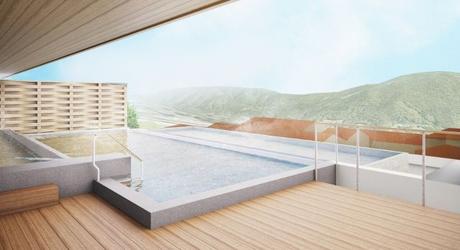
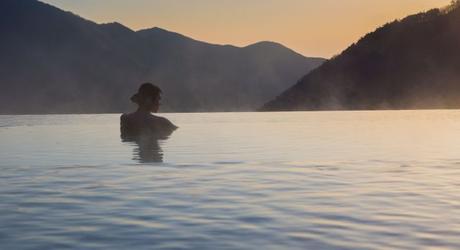

This opulent hotel is all about harmony and nature with perfect viewpoints for that early morning sunrise. It boasts state of the art facilities and comes with its own infinity onsen. For those who would like to wander around outside in bliss, there’s the Hakone Open-Air Museum nearby and the incredible Okada Museum of Art Footbath Café.
Hakone Kowakien Tenyu
Gora Sounkaku, Hakone
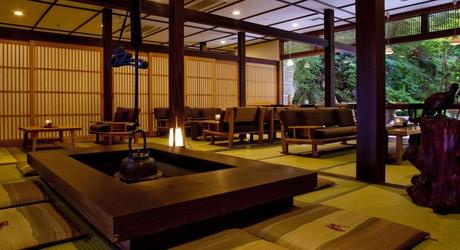
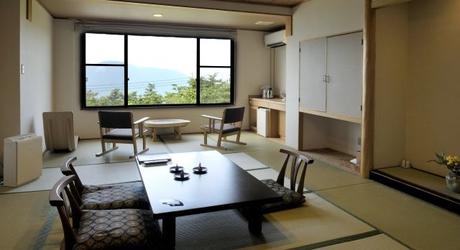
This resplendent hotel has a warm and inviting environment. Beautifully crafted wooden interior design with mountain views. Offering a mix of private open-air baths, public rock pool hot springs, first class cuisine as well as a relaxation room replete with massage chairs, surely life couldn’t get any better.
Gora Sounkaku
Pax Yoshino, Hakone
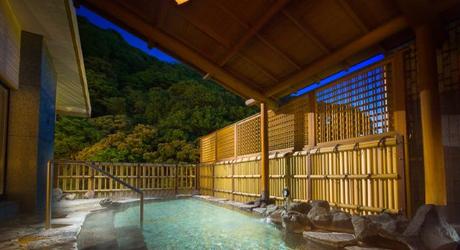
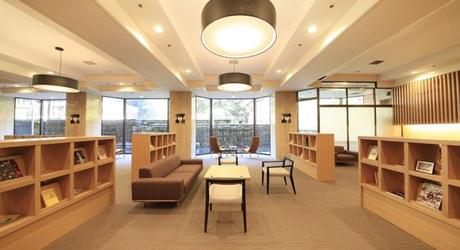
Why not start your day in the traditional Japanese banquet room for breakfast and from there enjoy any number of indoor (shaded) and outdoor onsen. The facilities here are fantastic and if you want to take your relaxation to the next level you can play some ping-pong, check out the library, the karaoke rooms or have an in-room massage.
Pax Yoshino
Kurashiki Ryokan, Kurashiki
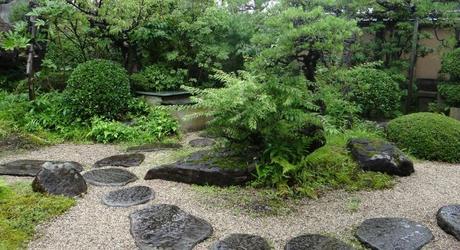

Further south from Tokyo and just east of Hiroshima, this hotel is a more modern take on the onsen (think concrete over wood). The restaurant here specialises in kaiseki dining (elegant multi-course meals) and has its own kura or storehouse. Located in the Bikan Historical District there’s history everywhere with quaint narrow streets and stunning canals outside for long walks at night.
Iwaso, Miyajima
Set in a cluster of islands in Hiroshima Bay, Iwaso is a rather extravagant destination with all the opulence one could ever wish for. Its bigger rooms even have their very own personal onsen. A three-minute walk outside will bring you into contact with the iconic world heritage Itsukushima Shrine, a photo opportunity if ever there was one.
Iwaso Miyajima
Iroha Ryokan, Miyajima
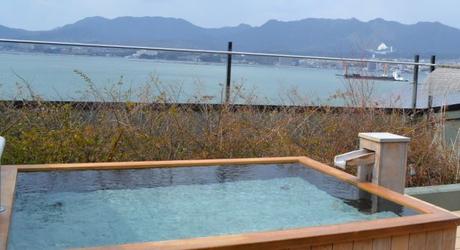
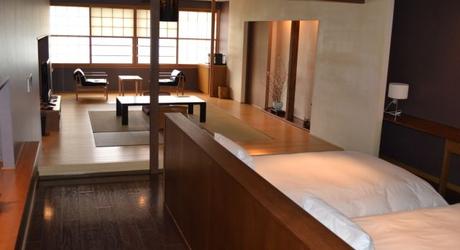
Big rooms, wide opens space and great sea views from this expansive onsen really do put pay to that sense of relaxation and other worldliness you will inhibit. Facial and full body treatments are available.
Iroha Ryokan Miyajima
Takayama Ouan
The natural baths are perched on a lofty high point offering views almost impossible to find anywhere else. There’s beautifully crafted Japanese design throughout with an option of western beds or rooms with traditional futons/tatami mats. To add a little romantic touch, there are cherry blossom trees outside on your doorstep.
Takayama Ouan
Honjin Hiranoya Bekkan, Takayama
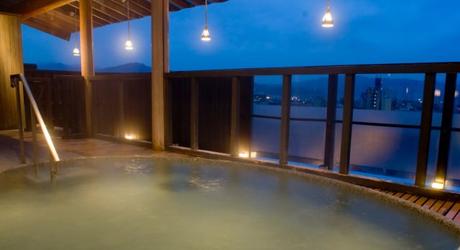

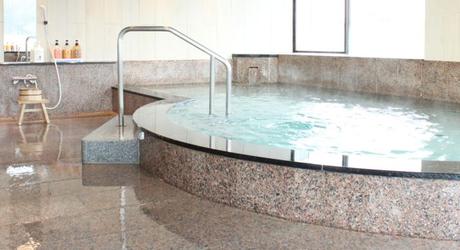
The Bekkan Annex is a comfortable mix of old and new. The interior is simply laid out with warm soothing white washed walls and cream colored corridors. Replete with tatami mats and shoji (sliding paper doors/walls), this ryokan offers large open rooms and indoor onsen.
Honjin Hiranoya Bekkan
Honjin Hiranoya Kachoan, Takayama
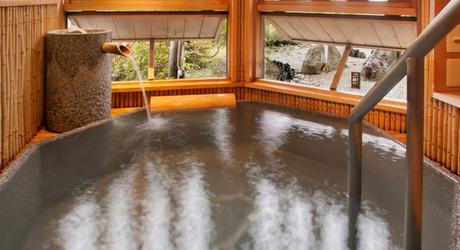

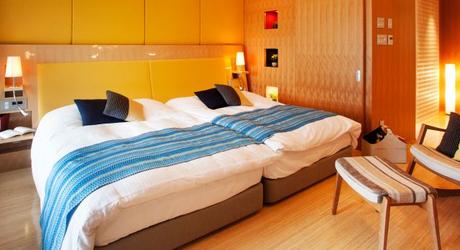
Expect privacy, intimacy, top service and large bedrooms (either traditional Japanese style or semi-Western style). There are a myriad of indoor onsen to choose from here and a special ladies only relax-KURA public bath with intricately designed rock formations and marble fixtures.
Honjin Hiranoya Kachoan
Takayama Oyado Koto no Yume
Conveniently and centrally located, as onsens in Japan go, this ryokan offers the ultimate in relaxation away from the noise and clutter of the world outside. There are themed rooms related to different aspects of Japanese culture and both the open-air public bath as well as the private bath with a view are the perfect tranquil spots to relax, surrounded by seasonal flower arrangements and soft lighting.
Your Japan vacation is incomplete without a relaxation soak in a traditional onsen! Our destination experts are happy to help you plan some downtime at the best onsens in Japan – get in touch with us for your tailor-made and obligation-free itinerary.
